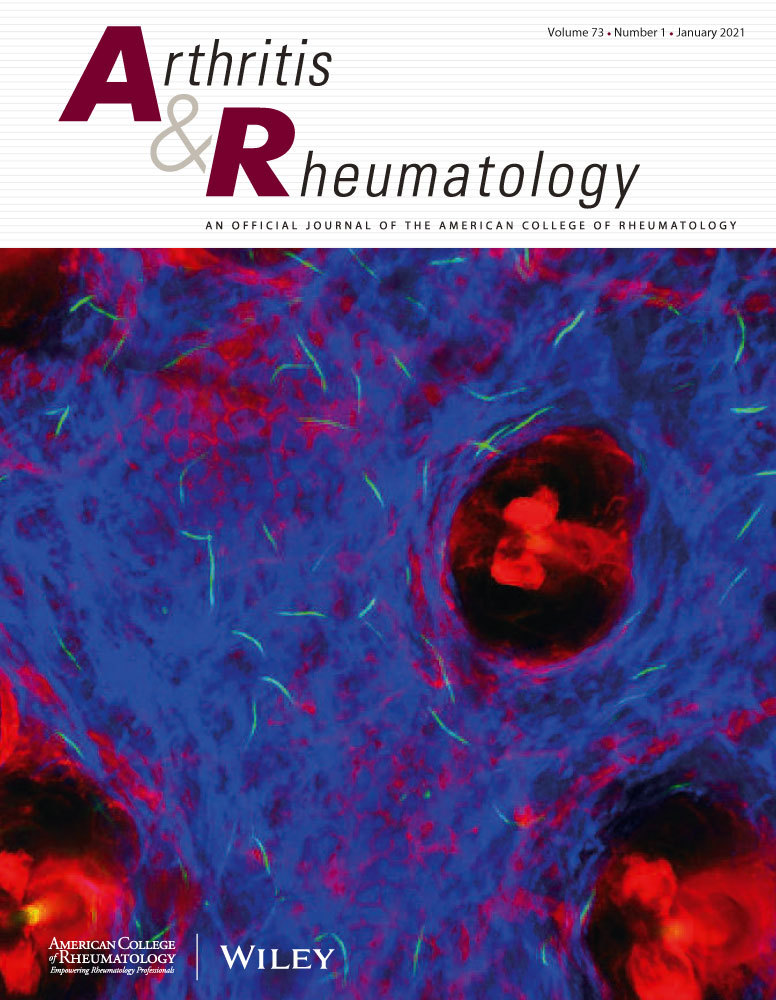阿达木单抗治疗的类风湿关节炎患者全血转录组学数据的机器学习分析确定了反应的预测性生物标志物。
IF 11.4
1区 医学
Q1 RHEUMATOLOGY
引用次数: 0
摘要
肿瘤坏死因子抑制剂(TNFi)可以显著改善类风湿关节炎(RA)的治疗,但患者反应的变异性仍然是一个重大挑战,大约40%的患者由于无反应或不良反应而停止使用TNFi。本研究旨在利用全血转录组学识别预测阿达木单抗治疗反应的生物标志物,利用机器学习模型进行数据挖掘,然后进行有针对性的统计分析。方法对开始TNFi治疗的RA患者(n=100)进行6个月时的治疗反应评估,并对基线(治疗前)和3个月随访样本进行RNA测序。建立机器学习分类器来识别治疗结果的预测性生物标志物。随后对生物标志物进行网络分析,以阐明最具影响力的生物标志物,随后通过生存分析确认。结果97份QC合格样品的差异基因表达分析鉴定出84个与治疗反应相关的基因。随机森林分类器的预测准确率很高,auc高达0.86,识别出影响治疗结果的基因。网络分析进一步阐明了基因相互作用,强调MZB1是一种新的生物标志物,不能单独通过机器学习捕获。MZB1在B细胞发育和抗体产生中的作用与抗药物抗体的形成有关,影响治疗效果。结论本研究促进了对RA治疗中转录组学改变的认识,增强了我们对RA治疗反应机制的认识。虽然确定的基因特征需要独立复制,但该研究为开始接受TNFi治疗的RA患者的个性化治疗策略铺平了道路。本文章由计算机程序翻译,如有差异,请以英文原文为准。
Machine Learning Analysis of Whole-Blood Transcriptomics Data in Rheumatoid Arthritis Patients Treated with Adalimumab Identifies Predictive Biomarkers of Response.
OBJECTIVES
Tumor necrosis factor inhibitors (TNFi) have significantly improved rheumatoid arthritis (RA) management, yet variability in patient response remains a substantial challenge, with approximately 40% of patients discontinuing TNFi due to non-response or adverse effects. This study aimed to identify biomarkers predictive of adalimumab treatment response using whole blood transcriptomics, leveraging machine learning models for data mining followed by targeted statistical analysis.
METHODS
A cohort of RA patients starting TNFi therapy (n=100) was assessed for treatment response at 6 months, with RNA sequencing performed on baseline (pre-treatment) and 3-month follow-up samples. Machine learning classifiers were built to identify predictive biomarkers for treatment outcomes. This was followed by a network analysis on the biomarkers to elucidate the most influential biomarker, which was subsequently confirmed through survival analysis.
RESULTS
Differential gene expression analysis in 97 samples passing QC identified 84 genes associated with treatment response. Random Forest classifiers achieved high predictive accuracy with AUCs up to 0.86, identifying genes contributing to treatment outcomes. Network analysis further elucidated gene interactions, highlighting MZB1 as a novel biomarker not captured by machine learning alone. MZB1's role in B cell development and antibody production was associated with anti-drug antibody formation, impacting treatment efficacy.
CONCLUSION
This study advances the understanding of transcriptomic alterations in RA treatment and enhancing our understanding of treatment response mechanisms. Whilst the gene signatures identified require independent replication, the study serves as a starting point to pave the way for personalized therapeutic strategies in patients commencing TNFi therapy in RA.
求助全文
通过发布文献求助,成功后即可免费获取论文全文。
去求助
来源期刊

Arthritis & Rheumatology
RHEUMATOLOGY-
CiteScore
20.90
自引率
3.00%
发文量
371
期刊介绍:
Arthritis & Rheumatology is the official journal of the American College of Rheumatology and focuses on the natural history, pathophysiology, treatment, and outcome of rheumatic diseases. It is a peer-reviewed publication that aims to provide the highest quality basic and clinical research in this field. The journal covers a wide range of investigative areas and also includes review articles, editorials, and educational material for researchers and clinicians. Being recognized as a leading research journal in rheumatology, Arthritis & Rheumatology serves the global community of rheumatology investigators and clinicians.
 求助内容:
求助内容: 应助结果提醒方式:
应助结果提醒方式:


